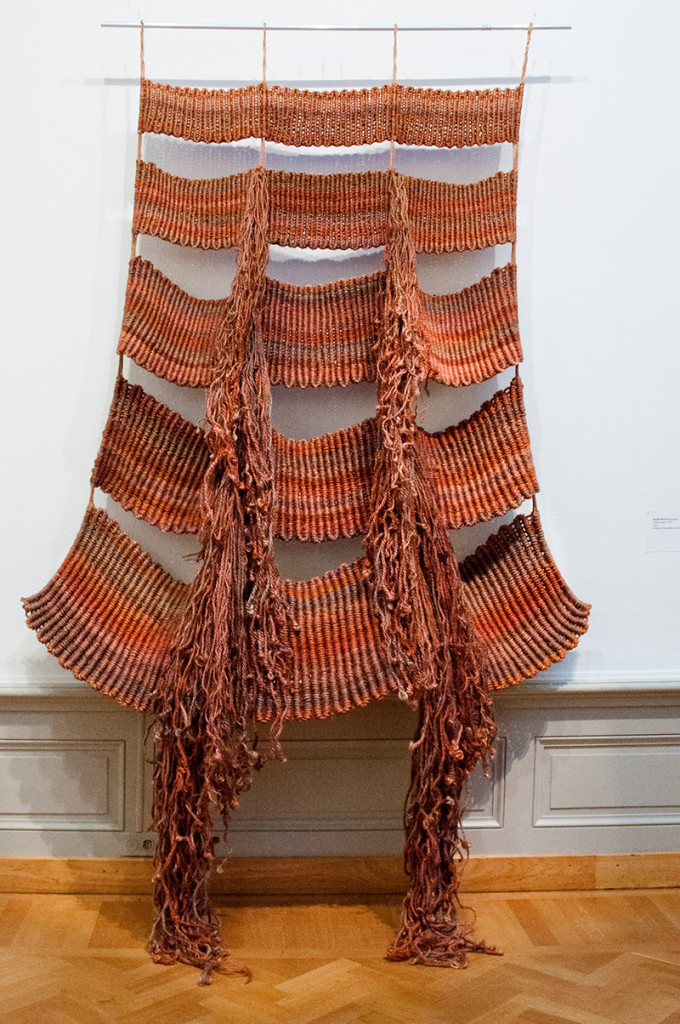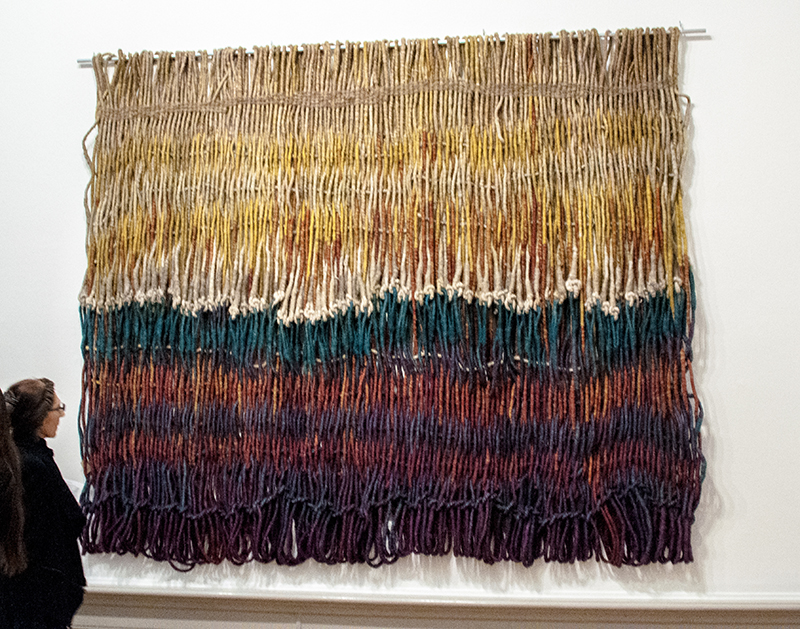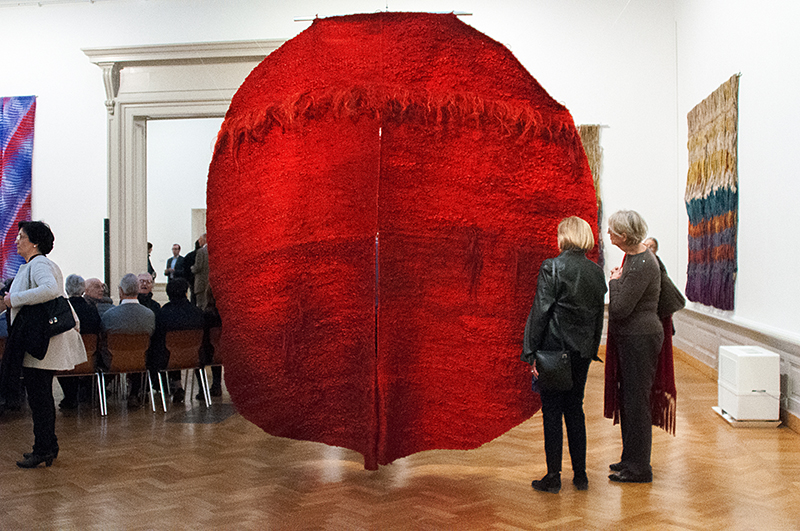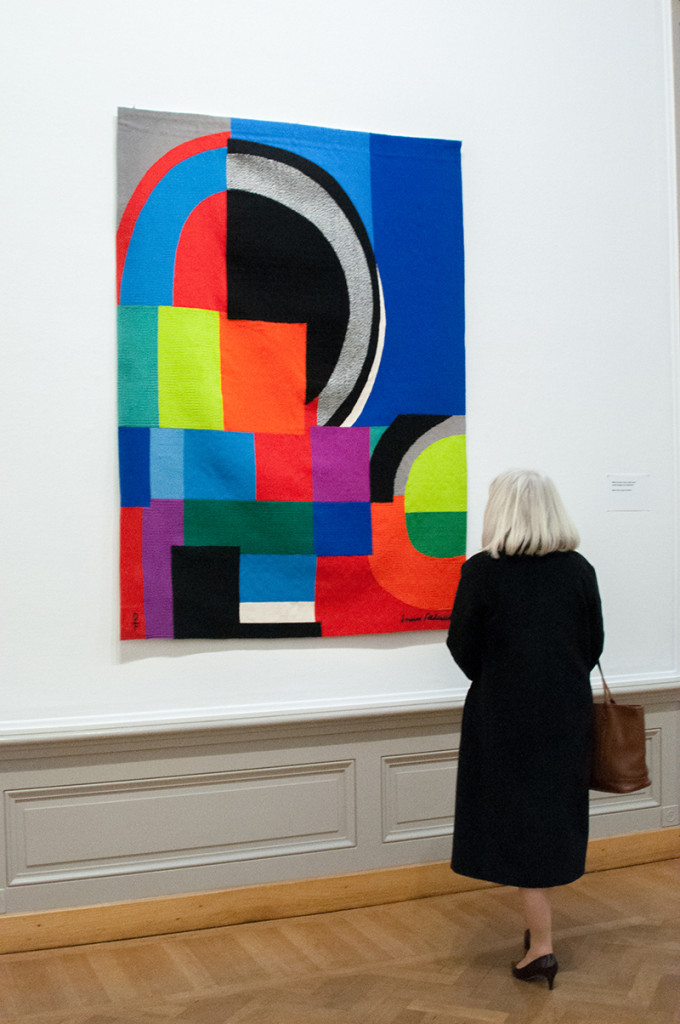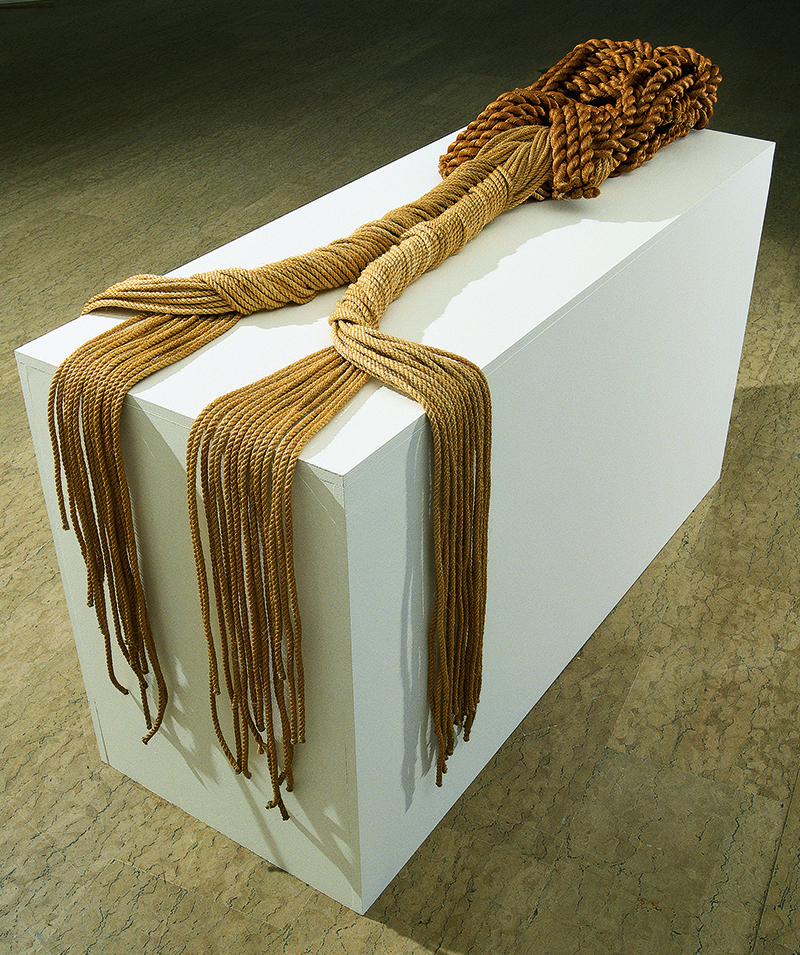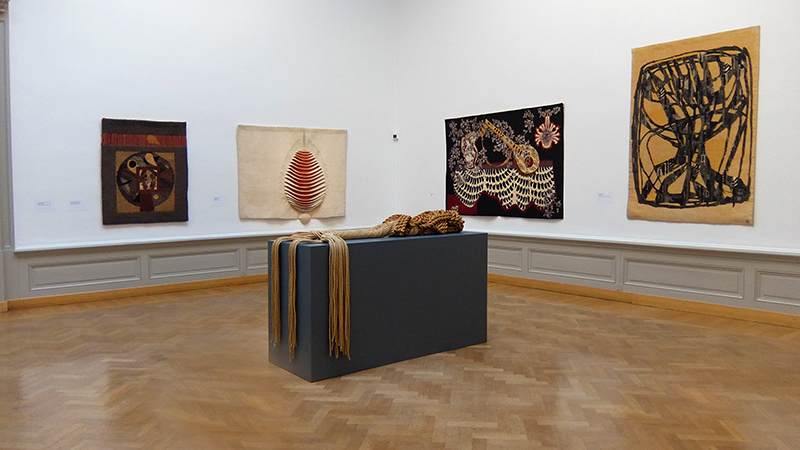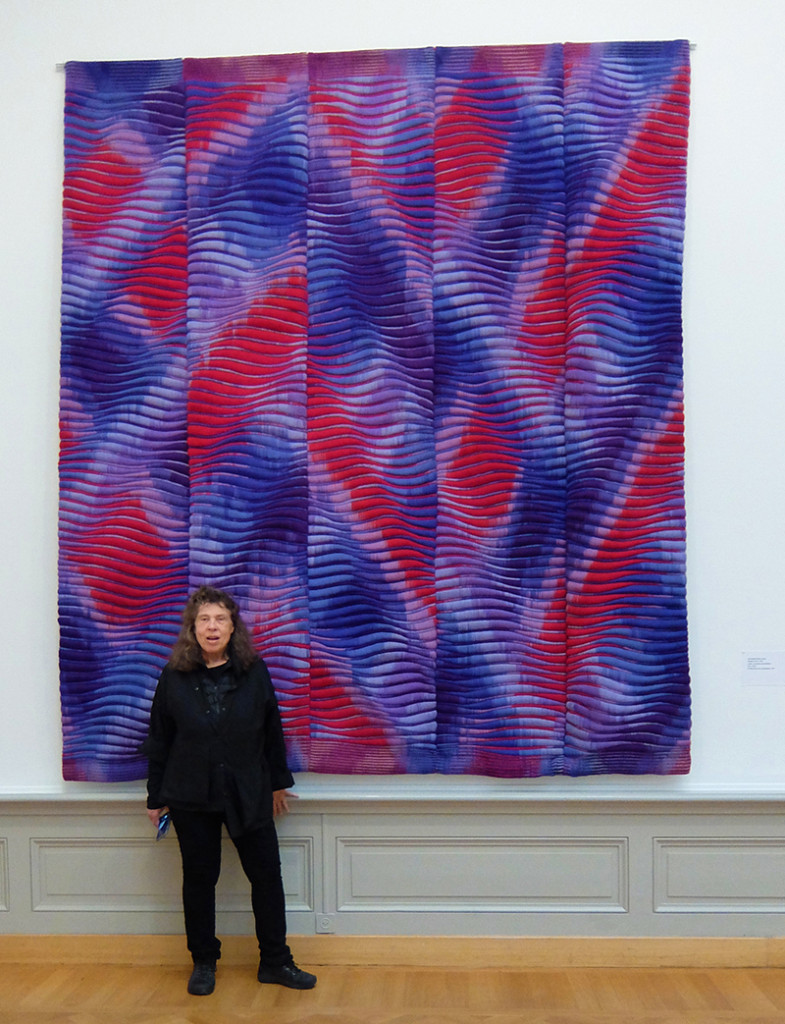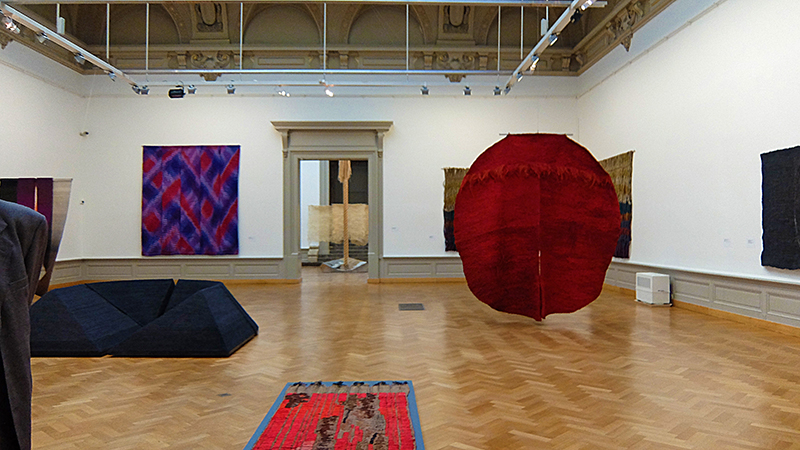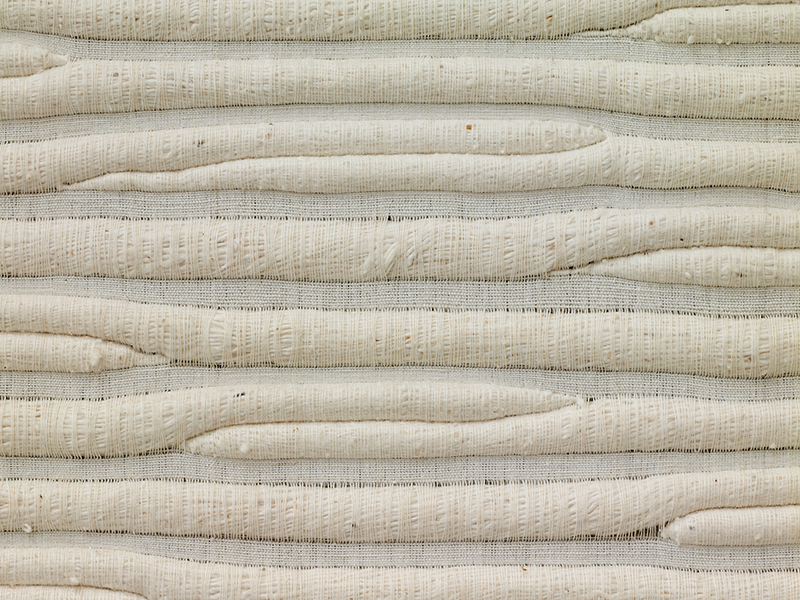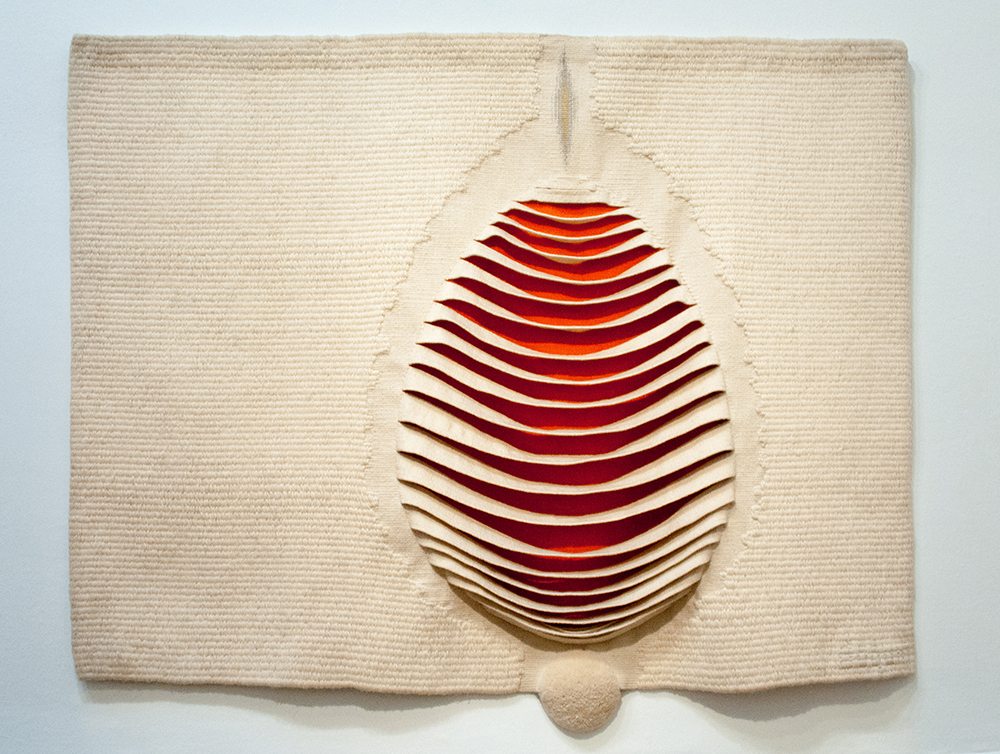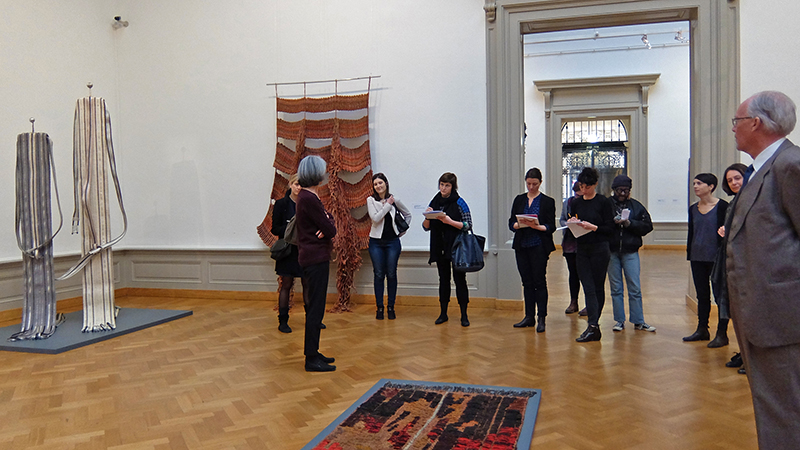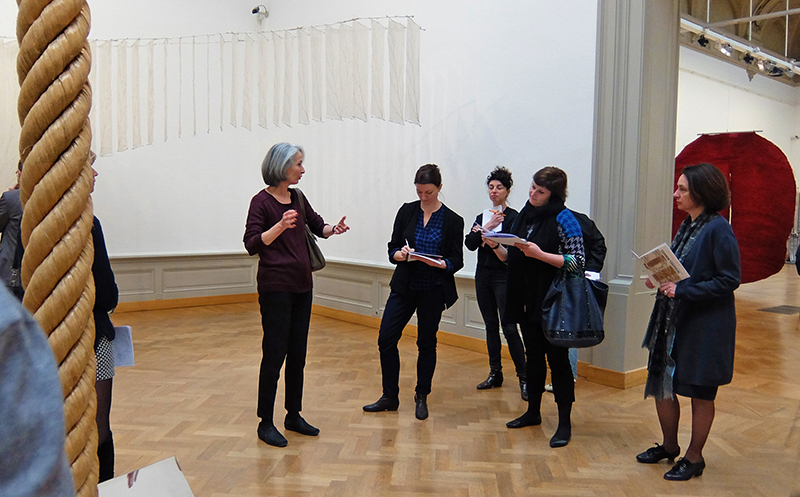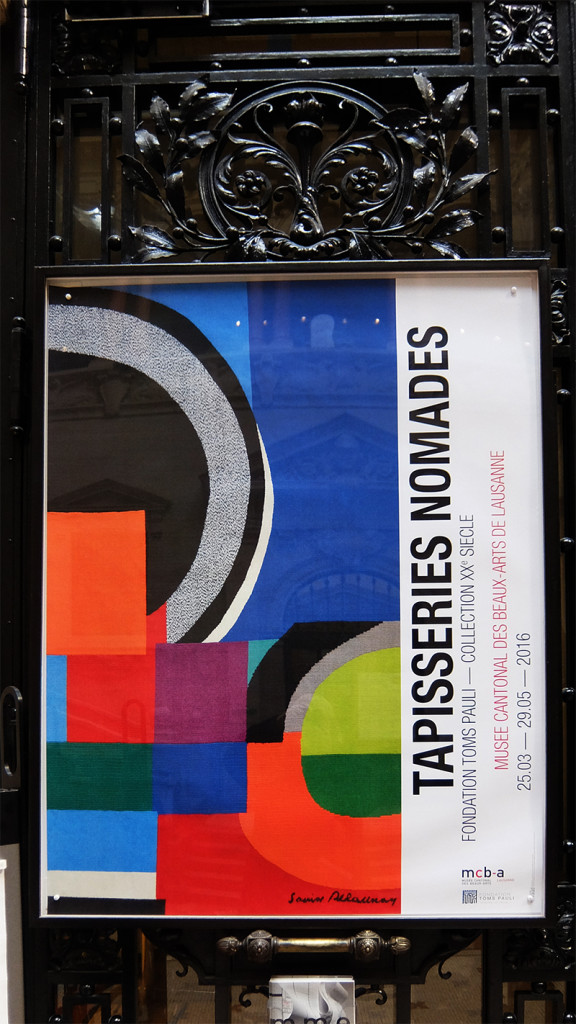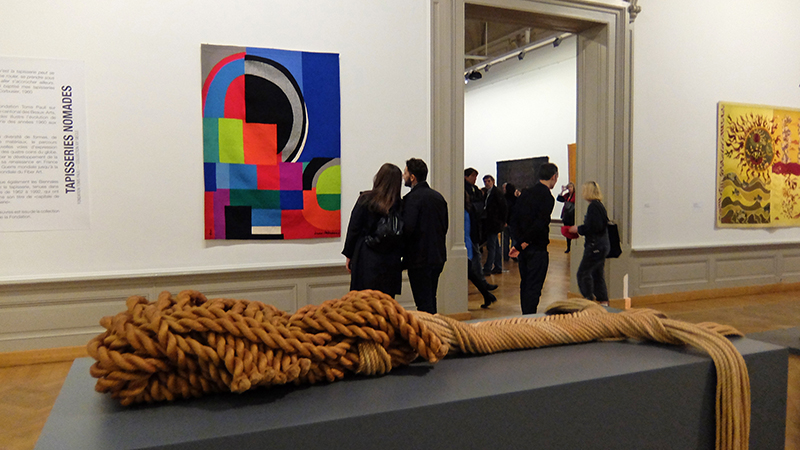
Fondation Toms Pauli. 20th Century Collection
Exhibition from 25th March to 29th May at the Lausanne Musée Cantonal des Beaux-Arts, Palais de Rumine
Palais de Rumine, the former venue of the Lausanne Tapestry Biennial, is housing an exhibition that draws on a long history. The Biennial last had access to the beautiful Palais in 1992; now Bernard Fibicher, the current director of the Lausanne Cantonal Museum of Fine Art, has invited the Toms Pauli Foundation – the Biennial successor – to present its collection of contemporary art at this very venue.
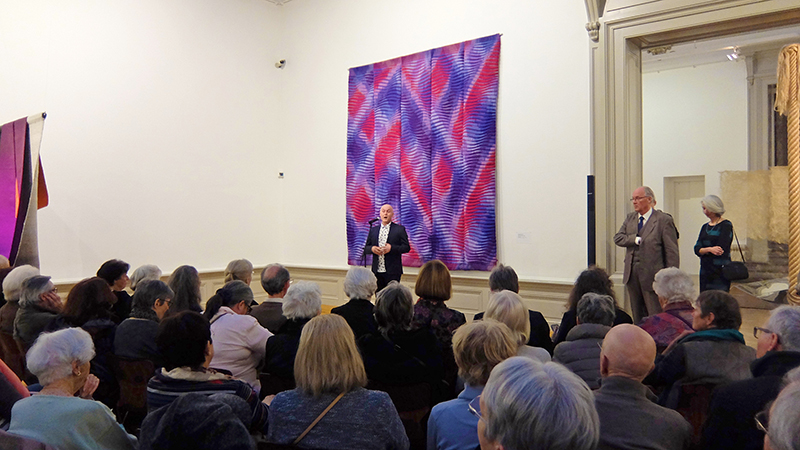
Positive changes that have taken place
The fine art scene has been increasingly interested in textile art for nearly a decade, to the point that textile works accounted for almost a third of the exhibits presented at the recent Venice Biennials. The same phenomenon has been noted at art fairs and major art exhibitions. The reason usually given is that tactile qualities take on greater significance in our digitized world. Moreover, they emphasize social relationships which are so easily visualized by means of textile media.
When the former Pierre Pauli Association merged with the Toms Foundation (historic tapestries) to form the Toms Pauli Foundation in 2000, the collection of modern textile art comprised 46 items. It currently has more than 200.
The Toms Pauli Foundation is partly the successor of CITAM (footnote 1). Its works – many from the collection of Pierre and Marguerite Magnenat and Alice Pauli, compiled from donations by artists and patrons and through purchases – are now owned by the Canton of Vaud. The current exhibition is undoubtedly a highlight in the history of the foundation.
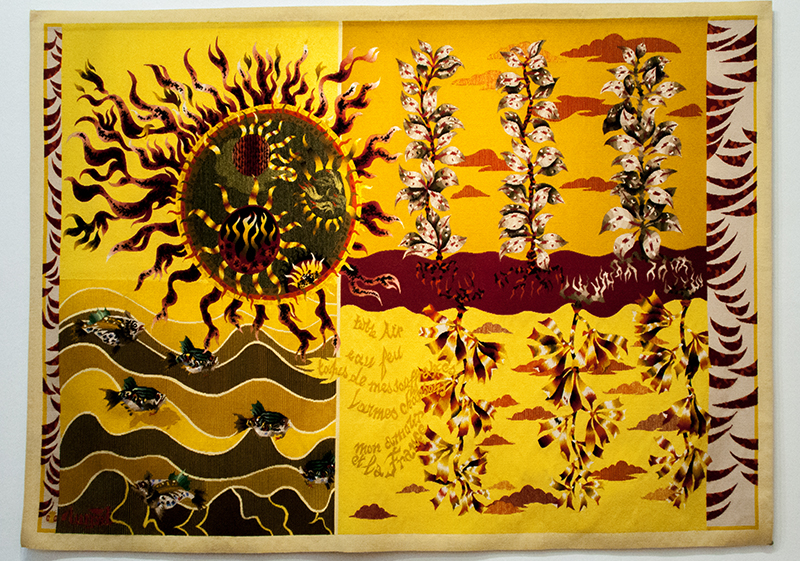
Works featured in the Tapisseries Nomades exhibition
The Foundation, which does not have an exhibition space of its own, did not intend to present a complete retrospective of the Biennials but to make its collection known to the public. The exhibition simply showcases 38 pieces from the foundation’s own collection, all by artists who exhibited at one of the 16 Biennials.
The exhibition organizers aim to illustrate the efforts of the New Tapestry pioneers, such as Jean Lurçat, Magdalena Abakanowicz, Jagoda Buić, Olga de Amaral, Elsi Giauque and Machiko Agano.
The show begins by presenting works created during the Sixties (Lurçat, Delaunay, Grau-Garriga). Most of them woven in wool, they bear witness to the renaissance of wall-based tapestries produced in the major workshops under the influence of Jean Lurçat. They are juxtaposed with works by Eastern European artists, the “new barbarians” who reinvented their medium. They produced their own one-off pieces, often employing unusual materials such as sisal or hemp (Abakanowicz, Łaszkiewicz, Sadley).
The conquest of three-dimensional space began in the late Sixties. Artists increasingly departed from the idea of classical tapestry weaving in favor of three-dimensional structures. In the process, some of them harked back to the old traditions of their countries (De Amaral). Others abandoned the tapestry technique altogether in compositions that played with open and closed forms (Buić, Grau-Garriga, Daquin).
Items created during the Seventies also display a refinement of textile techniques (Cook, Matter) as well as poetic and symbolic references (Hicks, Giauque, Abakanowicz).
From the mid-Seventies, an increase in the numbers of American and Japanese participants resulted in a new aesthetic. Artists now used every kind of fiber (animal, vegetable, synthetic) in highly inventive ways (Shaw-Sutton, Argano, Tanaka, Sitter-Liver). In the American terminology, textile art morphed into fiber art.
Incidentally, the exhibition title, “Nomad Tapestries” relates to a comment on the role of art and tapestry made by Le Corbusier in 1960 (footnote 2). He pointed out the necessary complementarity between tapestry and architecture in his days.
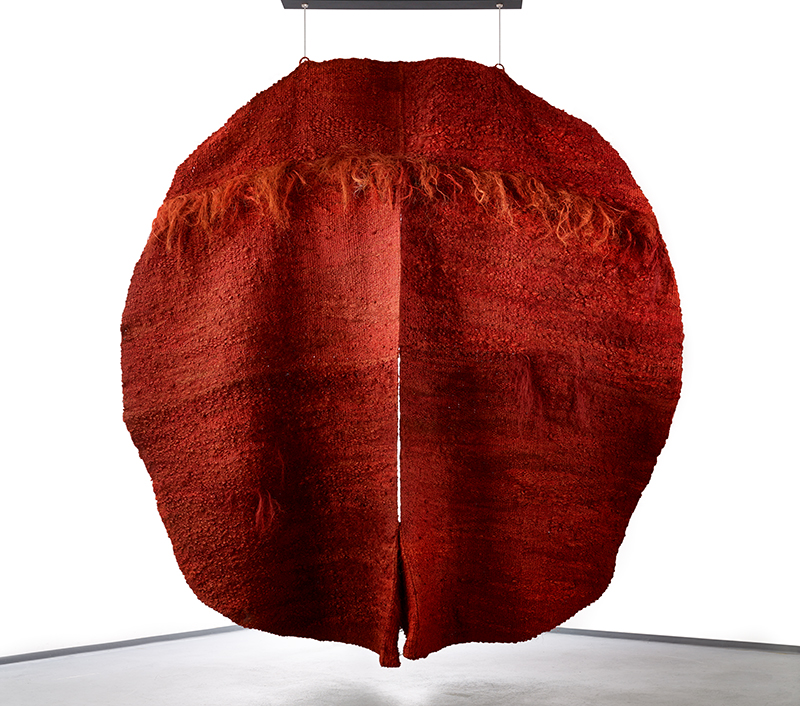
The Lausanne Tapestry Biennial sets the stage for a revolution
An unintentional revolution had taken place – a movement away from wall-based tapestry and towards free form textile art. It was unintentional because Jean Lurçat, the Biennial initiator, considered reproducible tapestries the object of his efforts. He had mixed feelings about the changes that moved tapestry in the direction of fine art. He is reported to have said, “Méfiez –vous des petites filles qui tricotent – Don’t trust those little knitting girls”, referring to the young Eastern European women artists who presented revolutionary one-offs at the Biennials (footnote 3).
This revolution, which Jenelle Porter dates to the decade from 1962 to 1972 in her article, “About 10 Years From the New Tapestry to Fiber Arts“ (footnote 4), matched the spirit of departure which prevailed during that period, and which also produced a new women’s movement. However, from the mid-Seventies this spirit of departure was sadly loosing its energy both in the textile revolution and in other social movements. All the same, young female artists received the greatest accolades in the press in the first and in subsequent Biennials.
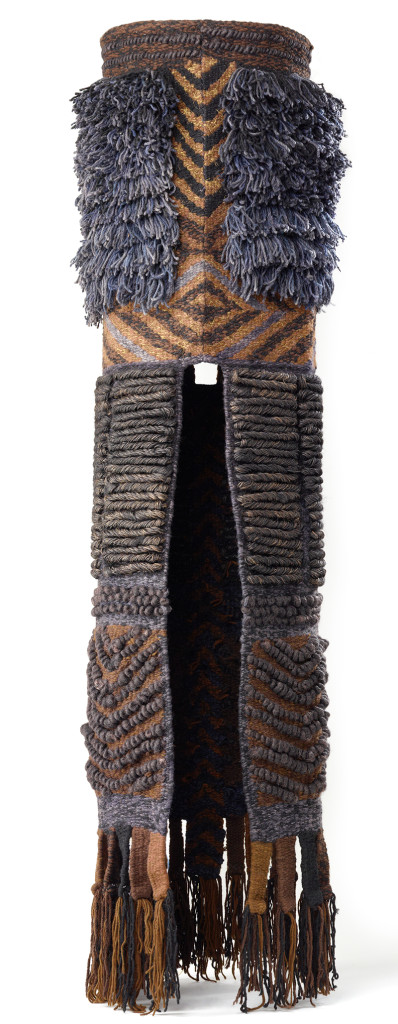
Reasons for the spirit of departure
Jenelle Porter believes that Lenore Tawney’s 1961 solo exhibition at the Staten Island Museum, N.Y., constituted the first step in North America, “the point at which Art Fabric was healthfully and joyously launched in America”. The oral history interviews conducted with artists like Tawney, Zeisler et al. (footnote 5) reveal their motivation; in addition to a rebellion against their male colleagues, they were inspired by the revolutionary ideas of Bauhaus artists who had taken refuge in the US and by a return to non-Western cultures, e.g. the great South American art of weaving.
A similar interest in ethnological and folk art developed in Europe, most notably in the former Eastern Bloc countries. Their artists, including applied artists, were generally very well trained. Since political repression imposed many restrictions on painters and sculptors, obliging them to toe the party line, the academies’ departments of applied art became highly popular with gifted artists eager to experiment. This was the case at the textile department of the Warsaw Academy of Fine Arts, where Magdalena Abakanowicz was a student until 1954, and the Poznan Academy where she worked as a professor during the Sixties. She was discovered by Pierre Pauli, the CITAM curator, and invited to participate in the first Lausanne Biennial. She became the central figure in the new departure that took place in Europe.
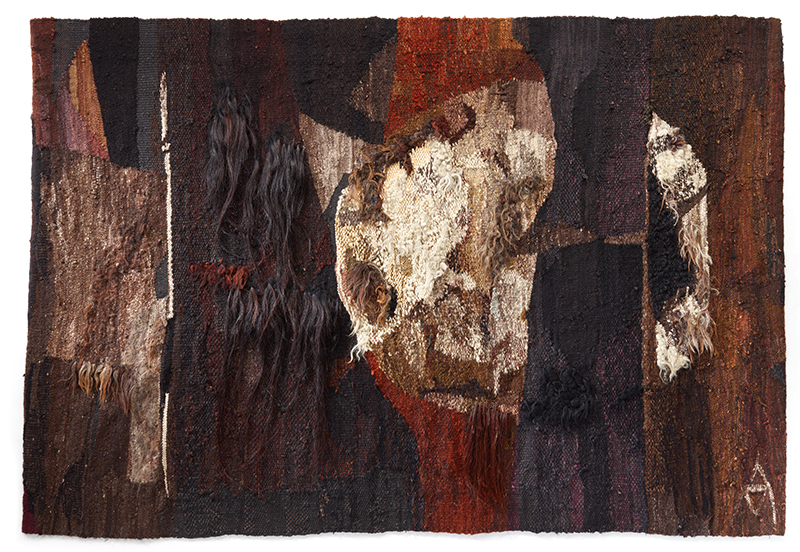
The significance of the Lausanne Biennial – a brief history
The Biennial was initiated by Pierre Pauli and his wife Alice together with the painter Jean Lurçat (1892 – 1966) in an effort to envisage a future for classical tapestry weaving. They joined forces to found CITAM (footnote 1) in 1961. The first Biennial was held in 1962, and the 16th and last Biennial took place in 1995. Pierre Pauli´s achievement was to bring together the best curators and lecturers from European museums and art academies who had expressed an interest in tapestries.
Most of the exhibits presented at the first Biennial were reproducible wall-based tapestries designed by well-known painters (Picasso, Le Corbusier) and woven at the major workshops (including Les Gobelins and Aubusson) in formats of at least 12 square meters.
The focus changed during the course of the first three Biennials. Young female artists from Central and Eastern Europe came to the fore, presenting one-off pieces made by themselves. They were known as the “tapestry barbarians”. Art historian André Kuenzli wrote, “The Tapestry of Tomorrow has been born in Poland!”, much to the chagrin of Jean Lurçat and other classical cartoon painters.
The 4th Biennial held in 1969 is considered the point at which three-dimensional space was taken over; artists like Abakanowicz and Elsi Giauque liberated their work from the wall, arranging it freely in space.
Now mostly female artists began to produce their own work around 1970, abandoning cartoons and, in many cases, wool as a material. Artists like Peter and Ritzi Jacobi, Sheila Hicks, Jagoda Buić, Aurèlia Muñoz and Françoise Grossen created textile sculptures which often employed unusual or new materials.
This new movement could no longer be ignored in early 1971, resulting in a search for a new name: “Nouvelle tapisserie” in Europe or “Fiber art” in the USA. Various European countries began to organize further biennials and triennials, such as the Polish Triennial from 1973 (to date!), the Dutch Biennials (1968 – 1974), the Nordic Triennials, the Szombathély Biennial/Triennial and many others.
The 8th and 9th Biennials (1977 and 1979 respectively) were marked by crises.
“Is it still tapestry?” reflected René Berger, Vice President of CITAM and director of the Lausanne Museum of Fine Art.
Themes were set for the 11th, 12th and 13th Biennials: “Fiber Space”, “Textile Sculpture” and “Celebration of the Wall” respectively.
However, the tripartite division did not help to overcome the crisis. In her introduction to the 14th Biennial (1989), Erika Billeter wrote: “The heroes are worn out (..) The revolution of the weaver’s art has been over for a long time.”
When the 16th edition was due (1995), the then director of the Museum of Fine Art refused to host the floundering Biennial. The new exhibition venues did not attract sufficient numbers of visitors, whereupon the Council of Lausanne, the most important sponsor, decided to discontinue the event and to dissolve CITAM.
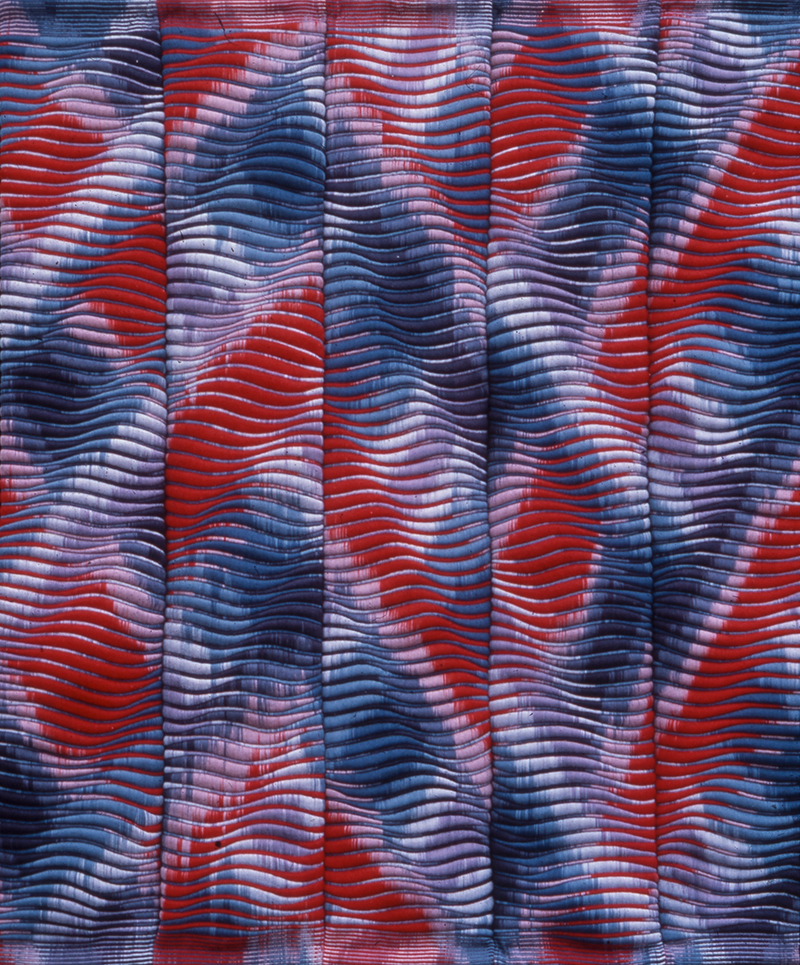
Personal comments
In the Sixties and Seventies, the Lausanne Tapestry Biennial constituted a radiant window to the world for us textile students and emerging textile artists. Lausanne was our Mecca. The spirit of departure we experienced during that period showed parallels which, to my mind, were not coincidental, i.e. the equation that “good times for women equal good times for textile art”. The later demise of the Biennial was foreseeable: Some of the later Biennial curators were disregarding the specific qualities and advantages offered by textile art (e.g. the connection with the public ). They focused on what was considered fine art to reassess the role of soft /pliable/textile/fibre material in contemporary art in an effort to get textile art out of its ghetto. It is ironic that the statement, “The artists are worn out” was made at the exact time when the new digital weaving revolution began, followed by the revolution of new “smart materials” and techniques (such as 3D- printing). An article in Textile Forum magazine on the subject is worth reading (footnote 6). Textile culture should be considered a cultural field in its own right, similar to architecture. An appreciation of textile art in terms of “fine art” only serves to deny those tactile and emotional qualities that now lead main stream artists to draw inspiration from textile art.
The current exhibition however, was a very positive surprise. The works, all made between 1960 and 1995, still radiated energy and powerful presence. Two examples out of many, that immediately come to my mind, are “Red Abakan III”(1970-1974) by Magdalena Abakanowicz and “Spatial Ikat II”(1977) by Lia Cook.
The public , that was present in large numbers again, was as enthusiast as during the original Biennial events. Asked for new plans in the realm of textile art , both the director of the Fine Art Museum and the Cultural Representative of the State of Vaud were very positive but waiting for the new museum building “Pôle muséal”, planned for 2019, where the Toms Pauli Foundation and the Fine Art museum will be in the same building. There was no catalogue but curator Giselle Eberhard Cotton is planning a detailed catalogue book on the history of the Lausanne Biennial to be published in 2017. Many images of Biennial works are published on their website (Footnote 7 ).
Beatrijs Sterk
Former editor of Textile Forum magazine,
current editor of https://www.textile-forum-blog.org
March 2016 (This article will be published in Surface Design Journal, Summer issue, 2016 )
Footnote 1: CITAM or Centre International de la tapisserie ancienne et moderne (International Center for the Promotion of Ancient and Modern Tapestry) was founded in Lausanne in 1961. The founder members were Jean Lurçat and Pierre Pauli.
Footnote 2: “Ce mur de laine qu’est la tapisserie peut se décrocher du mur, se rouler, se prendre sous les bras à volonté, aller s’accrocher ailleurs. C’est ainsi que j’ai baptisé mes tapisseries ‘Muralnomad’.”
Le Corbusier, “Tapisserie muralnomad” in Zodiac 7, Milan 1960
Footnote 3: See article by Dietmar Laue, “The International Lausanne Tapestry Biennial 1962 – 1995“ in Textile Forum 3/2012, pages 30 to 33
Footnote 4: Article in the catalogue of the exhibition, “Fiber Sculpture, 1960 to Present” held at the Institute of Contemporary Art, Boston, from 1 Oct. 2014 to 4 Jan. 2015
Footnote 5: “Oral history interview with Claire Zeisler”. Archives of American Art. Smithsonian Institution. June 26, 1981, and interview with Lenore Tawney, http://www.aaa.si.edu/collections/interviews/oral-history-interview-lenore-tawney-12309
Footnote 6: See article by Beatrijs Sterk ”Textile Art” in Textile Forum 3/2012, pages 34-37
Footnote7: http://www.toms-pauli.ch/biennales/historique/
